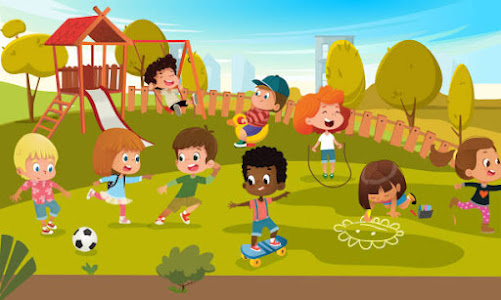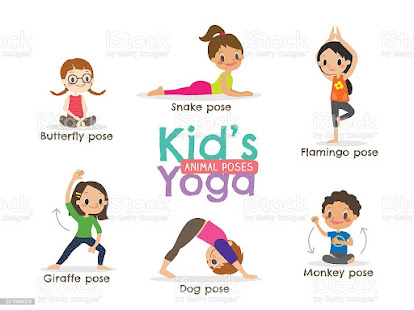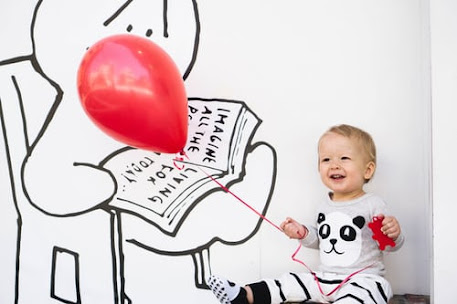10 Fun activities to develop Motor planning skills in children
Rishu's mom called "Lunch is ready. I have made your favourite noodles. Come fast before it gets cold." 5-year-old Rishu was making a house with his Lego blocks. When mom called for lunch, she immediately started disassembling her "house". Then she put all the Lego blocks inside a large re-sealable bag, holding the bag with one hand, & putting the lego blocks inside using another hand. After making sure, she has put all her Lego blocks inside the re-sealable bag, she closed the seal using her fingers, put the bag inside his "Toy cartoon box", then ran to the dining table. There was a plate of noodles for her. She sat on her chair, adjusted it, then started eating her noodles using the fork. The dish was delicious. Rishu cleaned her plate without dropping any noodles here & there, then went to the kitchen to put the empty plate in the sink.
The above set of actions refers to a normal daily task that seems very simple to us. But, in order to perform this series of actions, Rishu has to first think of what actions need to be done, understand how to move her body to complete the tasks, the sequence of actions to be performed & then perform the required body movements to complete each task.
Example- For the task: To Dis-assemble the Lego blocks & put them in the bag- She has to understand,
👉How to hold the blocks with her fingers
👉How to use both her hands to dis-assemble them easily,
👉How much force needs to be applied to remove the blocks
👉What body movements need to be done in which sequence in order to complete the task efficiently
👉How to hold the re-sealable bag in one hand keeping its mouth open while holding the blocks in the other hand to put them inside it
👉How to close the re-sealable bag with his fingers
👉How to correct the position of his body whenever required to perform a task easily & efficiently, or, in other words, he requires good "Motor Planning".
What is Motor Planning?
Motor planning or "praxis" is the process of deciding what your body wants to do & then doing it. It includes developing an idea about, planning, sequencing & executing actions. It helps us to carry out unfamiliar or new tasks.
Without good motor planning, skilled tasks like-"writing", "playing badminton", "playing football", "riding a bike", "cutting small shapes with scissors", "dancing", etc can be very difficult.
Even simple daily tasks like"holding a spoon to eat", "brushing teeth", "washing hands", "playing with Legos", "dressing", "tying shoe laces", "jumping", "climbing stairs", "Following the drill during the PT class at school" etc can be very difficult.
Factors essential for the development of good motor planning skills:-
➧ Sensory Feedback from the body(tactile, proprioceptive & vestibular stimulation)
➧ Sensory Feedback from the environment
➧ Muscle Tone
➧ Muscle strength
➧ Memory
➧ Thinking skills
If there's an inadequacy of some of these factors, a child will have motor planning difficulties that affect his daily life activities.
😞The tasks which are easily performed by others can be very exhausting for a child with motor planning difficulties, or dyspraxia.
😞He might not be interested to participate in games with his peers especially if the game is not directed by him.
😞This affects his self-confidence.
Motor planning difficulties can be found in children with Autism, ASD, SPD, Down Syndrome, DCD(Developmental Coordination Disorder), Learning Disabilities, etc.
It was recess time. Krish's friends called him to play pass the ball game. 5-year-old Krish ran to the field to play ball with his friends. They had to stand in a circle, at some distance from one another, throwing the ball from one person to the other. Krish was having a hard time judging the speed, distance & direction of the ball and he missed a number of catches. He became frustrated after a few rounds, & went to play on the playground slide. He enjoyed the sliding game very much.
After recess, it was English class. Krish was having difficulty sitting still & focusing on what his teacher is saying. He was constantly shifting his position. "Today, we are going to learn some new action rhymes, everyone sing after me & do the actions," the teacher said.
All the kids were very excited. Krish was having a tough time following the teacher to coordinate his actions & singing even after many trials. He was frustrated & exhausted by the end of the class.
In the above example, Krish might be having motor planning difficulties for which he was having a hard time performing the tasks which other children could do easily.
How to identify Motor Planning difficulties?
Motor planning difficulties can be identified if your child is facing challenges in some of these areas:-
➤Poor postural control. He needs support to lean on while standing or even sitting. Prefers lying down anywhere possible.
➤ Difficulty using a spoon efficiently while eating(frequently drops food, cannot position spoon properly while eating, slow to finish the food)
➤ Difficulty in the efficient use of fingers & hands while eating with hands
➤ Difficulty in dressing/undressing (he is very slow, or, doesn't understand how to position & move his body parts efficiently while dressing/undressing)
➤ Difficulty tying shoelaces
➤ Difficulty using scissors
➤ Difficulty holding a pencil with adequate pressure while writing(frequently drops the pencil)
➤ Writing is slow & illegible
➤ Difficulty copying from the blackboard
➤ Difficulty following the movements during Drill/PT class.
➤ Difficulty following actions with rhymes, or dance steps.
➤ Difficulty playing ball games like- pass the ball, football, etc.
If a child has motor planning difficulties these simple everyday tasks can be exhausting & frustrating. Therefore, it is essential to help the child develop good motor planning skills to make theirs & your life easier.
How to facilitate the development of motor planning skills in children?
During my work period, I have worked with many children who have motor planning difficulties. They exhibit varying degrees of motor planning difficulties. Thus, here, I will be sharing some activities that are easy, fun & very effective to develop motor planning skills in children if practiced on a regular basis. The activities mentioned can be easily practiced at home by anyone.😄
➤Obstacle Courses
Different kinds of obstacle courses can be a great way to develop praxis in children. You can set up an obstacle course depending on your child's age & level making it simple, or complex.
👉You can use objects easily available at home like boxes, small & large stools, chairs, buckets, pillows/cushions to set up an obstacle course for your child.
👉Make sure that your child uses a combination of different movements in the obstacle course like jumping, climbing, walking, crawling, etc.
👉Bear walk
👉Crab walk
👉Elephant walk
➤Walking on a Narrow area
➤Target practice
Practicing throwing at a target is a great way for kids to learn how to coordinate their eyes with the movement of their body. It helps to enhance the pacing, timing, and rhythm of actions.
➔Start with them standing still and close to the target. As they get better at this skill they can move further away.
➔They can even start to throw while their body is moving (such as on a swing or while they are walking).
➔You can use large balls at first to hit a target. Small balls can be used to make the games more challenging.
Some gameplay ideas for this can be:
👉Throw balls at a target on the wall.
You can write some letters/numbers/any objects on pieces of paper & paste them on the wall. Let him stand/sit/kneel at some distance.
Then, he/she has to hit any target that you command with a ball. Increase the distance between the target & your child as he gets good at this game.
👉Throw balls at a target on the wall & catch it
This game can be played if your child has the adequate praxis required to both hit the target as well as catch the bouncing ball. It is more challenging than the previous game.
➔You can draw a circle at a suitable height from your child. He can stand/sit/kneel at a distance.
➔Then, ask him to hit the circle with a ball & catch it when it bounces back. Start with 5 catches. Then increase to 10-20 catches.
Take turns with your child giving rewards to the one who can do more catches.
When you start including some of these activities into your child's play on a regular bais, it will make yours & your child's life much easier.
Try out !
Enjoy reading.
Happy parenting to all my readers.😊
About the writer :-
The writer’s name is Abhipsa Parida. She is an occupational therapist specialised in pediatrics and has been handling kids with special needs since 5 years. She is quite experienced and skillful in observation, assessment and planning intervention for kids with special needs. She uses evidence based practice and is very creative and updated in her approach while handling kids with special needs. She has her own clinic in Bhubaneswar and has handled many kids of different age groups with varying needs.
If you have any queries, you can mail them at abhipsaot21@gmail.
















Comments
Post a Comment